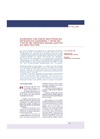Please use this identifier to cite or link to this item:
https://accedacris.ulpgc.es/jspui/handle/10553/7388
| DC Field | Value | Language |
|---|---|---|
| dc.contributor.author | Conde Cid, Luis | - |
| dc.contributor.author | Fernández Vacas, Francisco | - |
| dc.contributor.author | Martínez Melgarejo, Miguel | - |
| dc.date.accessioned | 2012-05-15T04:01:57Z | - |
| dc.date.accessioned | 2018-03-14T07:59:21Z | - |
| dc.date.available | 2012-05-15T04:01:57Z | - |
| dc.date.available | 2018-03-14T07:59:21Z | - |
| dc.date.issued | 2002 | - |
| dc.identifier.issn | 1134-5306 | - |
| dc.identifier.other | Dialnet | - |
| dc.identifier.uri | https://accedacris.ulpgc.es/handle/10553/7388 | - |
| dc.description.abstract | En este trabajo se describe el desgaste adhesivo (scuffing) que representa la más severa de las agresiones a la que se ven expuestos aros de pistón y camisas de cilindro de motores diésel lentos de dos tiempos aplicados a la generación eléctrica, al quemar combustibles de bajo contenido en azufre. Al afectar simultáneamente, a estos dos elementos básicos de la cámara de combustión, repercute negativamente tanto en la continuidad del servicio del motor, como en los costes asociados a la restitución de las condiciones nominales de trabajo. | - |
| dc.description.abstract | Adhesive wear, known under its more familiar English name scuffing is described in this contribution. Focus will be made on scuffing afecting cylinder liners and piston rings of two-strokes cycle low speed diesels engines applied to electricity generation, burning lowsulphur heavy fuel oil. Scuffing is the most severe type of wear to wich piston rings and cylinder liners are exposed because two main basic components are impaired simultaneously. Availability to keep the engine safetily running is no more possible and extremely high reparation costs are related to get the nominal service condition again. | - |
| dc.format | application/pdf | - |
| dc.language | spa | - |
| dc.relation.ispartof | Vector Plus | - |
| dc.source | Vector plus: miscelánea científico - cultural[ISSN 1134-5306] (20), p. 15-21 | - |
| dc.subject | 3306 Ingeniería y tecnología eléctricas | - |
| dc.subject | 33 Ciencias tecnológicas | - |
| dc.subject.other | Scuffing | - |
| dc.title | Desgaste adhesivo (scuffing) en camisas de cilindros y aros de pistón de motores diesel lentos de dos tiempos | - |
| dc.type | info:eu-repo/semantics/article | - |
| dc.type | Article | - |
| dc.identifier.url | http://dialnet.unirioja.es/servlet/articulo?codigo=1972981 | - |
| dc.compliance.driver | 1 | - |
| dc.identifier.absysnet | 231633 | - |
| dc.identifier.crisid | 984;-;630 | - |
| dc.description.lastpage | 21 | - |
| dc.identifier.issue | 20 | - |
| dc.description.firstpage | 15 | - |
| dc.investigacion | Ingeniería y Arquitectura | - |
| dc.rights.accessrights | info:eu-repo/semantics/openAccess | - |
| dc.type2 | Artículo | - |
| dc.contributor.authordialnetid | 617449 | - |
| dc.contributor.authordialnetid | 617447 | - |
| dc.contributor.authordialnetid | No ID | - |
| dc.identifier.dialnet | 1972981ARTREV | - |
| dc.identifier.ulpgc | Sí | es |
| item.fulltext | Con texto completo | - |
| item.grantfulltext | open | - |
| crisitem.author.dept | Departamento de Ingeniería de Procesos | - |
| crisitem.author.dept | GIR SIANI: Computación Evolutiva y Aplicaciones | - |
| crisitem.author.dept | IU Sistemas Inteligentes y Aplicaciones Numéricas | - |
| crisitem.author.parentorg | IU Sistemas Inteligentes y Aplicaciones Numéricas | - |
| crisitem.author.fullName | Conde Cid, Luis | - |
| crisitem.author.fullName | Martínez Melgarejo,Miguel | - |
| Appears in Collections: | Artículos Vector plus. n.20, 2002 | |
Page view(s)
505
checked on May 31, 2025
Download(s)
3,057
checked on May 31, 2025
Google ScholarTM
Check
Share
Export metadata
Items in accedaCRIS are protected by copyright, with all rights reserved, unless otherwise indicated.
